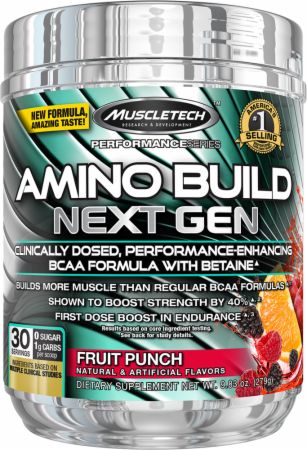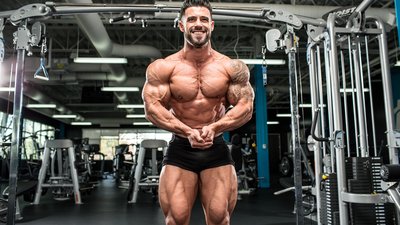Whether it's bigger totals or bigger quads, we all have our own reasons for wanting to squat more weight. In this article, IFBB pro bodybuilder and MuscleTech-sponsored athlete Santi Aragon follows up on his top three tips for benching more with his breakdown of the elements that go into a superior squatting technique. Follow these tips and you should see immediate results.
1. Know Your Goal
First, decide what your ultimate endgame is.
Strength training calls for consistently pushing into personal-record (PR) territory by either squatting more overall pounds or squeezing out a few more reps with your best weight. If you're after muscle growth, stimulate your muscle fibers by putting your muscles under heavy tension for longer.
"I'm starting to prep for the 2018 Arnold Classic men's physique contest," Aragon says. "Instead of focusing on the barbell back squat, I work on my front squat, which targets the quads by putting the resistance directly over them."
The wider the sweep of the quads, Aragon says, the better his taper, making his waist look smaller in comparison. To help subtly shift focus even more to the quads, he'll often squat with a two-and-a-half-pound plate under each heel.
2. Ease Into Your Working Sets
Do you like to just go straight to the squat rack and get started? Not so fast! Warm up first.
"Your knees will take a beating over the years from squats," Aragon says. "Protect these joints by doing higher-rep leg extensions before you squat."
Aragon will do as many as 50 reps per set for 2-4 sets until his knees feel ready for the squat onslaught.
"Don't do anything crazy as far as the weight," he warns. "You're just trying to pump blood into the area without coming anywhere close to failure."
3. Put A "Spring" In Your Squat
Aragon has experimented with a unique training approach developed by fellow IFBB pro and trainer John Meadows.
"Meadows recommends getting a nice pump in the hamstrings prior to squatting," Aragon says. "It sounded bizarre to me at first, but pushing blood into the hamstrings before the squat creates almost like a slingshot effect when you're coming out of the hole. It makes you feel like you're a piston exploding up in an engine cylinder."
To warm up his hamstrings, Aragon pairs seated leg with lying leg curls. He'll usually do 3-4 sets of 15 reps apiece.
4. Choose Your Weapon
Aragon prefers the front squat in his own training, but advises people to find what works best for them.
"There are many squat variations to choose from, including front squats, Smith machine squats, hack squats, dumbbell squats, and the standard back squats," he points out. "It comes down to what you're trying to achieve"
Aragon recommends Smith squats for beginners or those returning to the gym from an injury. A hack squat allows for various foot placements so you can target specific parts of your quad. Dumbbell squats can help you extend your range of motion, because you can lower the weights all the way to the floor, and the back squat is still the gold standard for basic strength and muscle building.

5. Pyramid for Mass
To build muscle mass, the typical pyramid approach is your best bet.
"I start light, doing what Meadows calls 'feeder sets'—warm-ups that get you ready for the working sets to come," Aragon explains.
For front squats, Aragon begins with an unweighted bar for 10 reps. He slides a 25-pound plate on each side for the next 10 reps, followed by 45s for another 10. He does the last 10 reps with a 45 and a 25 on each side. Finish those up, he says, and you're ready to pick up the real weights.
"For the three working sets, I'll start with two plates per side, then two plates plus a 25 per side, then maybe three plates for a final working set," Aragon says. "I want to get at least 10 reps, but I'm shooting for 15."
You should be able to handle more weight on a back squat than a front squat, so adjust your weights accordingly.
6. Push Yourself for Power
"If you're powerlifting, you're going to be focused on the back squat," Aragon says. "If you follow an aggressive progressive overload approach, you can break PRs in almost every workout."
Progressive overloading requires careful workout logging.
"You'll need good documentation to see what you have to beat the next time around," Aragon explains. "Every time you squat you either have to do more weight or more reps. For example, if you did 300 pounds for 12 reps last week, shoot for 8 reps of 325 pounds this week."
If you can get 8 quality reps with that bigger weight, he says, try for 10-12 reps next time. Once you can do 12 perfect reps, bump up the weight for your next workout.
7. Don't Lose Faith
Personal bests are exciting but often difficult to attain.
"A ton of variables go into each workout," Aragon says. "Changes in what and when you ate, how long you slept, and when you work out can all affect your performance. All you can do is go as hard as you can, and hope that next week you'll get over the hump."
But, he says, don't ignore warning signs.
"Be in tune with your body," says Aragon. "If you're doing warm-ups and one knee or hamstring is tight, change course. Do squats, but maybe do a hack instead of a front squat so you don't need to worry so much if your balance is off due to nagging strains. Listen to your body above all else and don't be afraid to change things up."
8. Augment Your Squat
Numerous exercises can benefit your squat, including leg presses, hack squats, lunges, step-ups, Romanian deadlifts, extensions, and leg curls. But one that's not necessarily as obvious is, in Aragon's opinion, the best of them all.
"Get good at either a rack deadlift or a standard deadlift from the ground," Aragon advises.
Once you do that, he says, every single pushing or pulling compound movement—whether it's a squat, a bench press, or any barbell or dumbbell exercise—will seem easier.
Aragon believes that once you regularly handle 400 or 500 pounds in a deadlift, you'll get more aggressive and more confident with lower weights. An 80-pound dumbbell will feel a lot lighter when compared to those massive deads.
"If you concentrate on your rack, or regular deadlifts in general," says Aragon, "everything else gets better—especially your squat."



